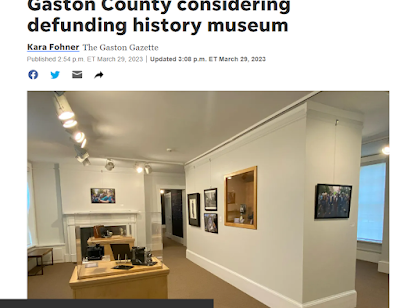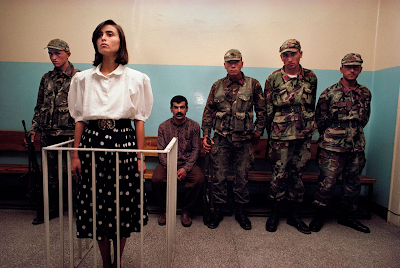Pulitzer-winning photojournalist, Kent State shooting survivor John Filo discusses modern journalism
By Shannon Garrido, Content Managing Editor
April 20, 2023
A little more than half a century after the 1970 massacre at Kent State University, the Pulitzer Prize-winning photojournalist John Paul Filo feels that the nation is in a state of confusion and outrage.
Filo, a survivor of the tragic shootings, photographed 14 year-old protester Mary Ann Vecchio kneeling over the body of 20-year-old Jeffrey Miller, a college student protesting the Vietnam War, who was shot dead by the Ohio National Guard soldiers. In an event last week, sponsored by Emerson’s Communication Studies Department, Filo and Vecchio were invited to speak to students last week at the Bright Screening Room of the Paramount Theatre.
Filo’s kind eyes and enthusiastic tone make his otherwise tall demeanor and impressive reputation less intimidating. Yet, in an interview with the Beacon, Filo went quiet before answering how people view that tragic event today—“I don’t know,” he says.
“It’s a generational thing,” Filo said. “The people that don’t know anything about Kent State are only a little younger than me. Yet the killing of Americans is still going on. And it’s even become more efficient.”
Filo, at the time a student journalist, was in the college photo lab when he heard gunshots on campus, leading him to rush to the courtyard where he witnessed Vecchio crying out to a body on the ground. As he prepared his lens, he noticed a guard pointing and firing a gun directly at him. Once he realized the guards carried real bullets—something many of the students did not initially realize—he turned back to run. However, he experienced something he describes as a “combination of innocence and stupidity” causing him to change his mind, and before he knew it, Filo was running back to photograph the scene.
Filo said sarcastically that his actions on that day were normally reserved for conflict zones.
“I never wanted to be a war photographer,” he said. “I was shot at once, that was enough for me.”
Since the KSU shooting, semi-automatic weapons available to the public have become twice as deadly, yet Filo said that the outrage, and the corresponding need to understand the history behind gun violence, has become far less common.
For years, students from middle school to college would constantly contact Filo, curious to learn about his experience at Kent State that fateful day. He hasn’t received a call like that in nearly five years. He wonders if the more time goes by, the more people forget that the massacres’ consequences affect politics in this nation today.
Filo believes that this disconnection is part of the new wave of journalism, where quantity trumps quality and the more terrifying an issue becomes, the more desensitized people become to it.
“Great things happened when people started shining a light on the bad parts of our society,” said Filo. “In the turn of the 1800s, pictures showing child labor were horrible, but that brought in labor laws. Horrific pictures of the Holocaust or the Civil Rights Movement actually shocked people.”
Filo said that the Kent State shooting was another moment that shocked people. A wave of papers would not run his photographs, he said, because it revealed many truths across the nation.
Filo wonders if “the dumbing down of our whole industry,” where journalists stop trying to send a message, prevents stories from having the same impact.
“Now we are on this teeter totter of mass murder, funeral, mass murder, funeral,” Filo said. “And there’s nothing breaking this rocking back and forth. Personally, I’m saying there needs to be that shock and outright disgust that brings people to the street to protest.”
Although he is glad his photograph gained the traction it did, the efforts would be futile to Filo if journalism stops having the same impact today. In regards to how photojournalism could steer away from sensationalism while still being persuasive, Filo believes there is no harm in relying on tools of the past.
“What happens today is to get their money’s worth, the [newspapers] say ‘hey take a digital camera go out and shoot,’ said Filo. “Don’t try to edit down the visual space to try to get a message out of it, to push onto the viewer. Instead they go and take the 2000 photos.”
Photography, Filo said, held a different value during his career. When new film colors came out—and suddenly color meant more than just ink on paper—it transformed the photographer’s ability to tell stories. Filo said he misses the authenticity of it all, joking about a past frustration with sports photographers in the West Coast who could make their players look tanner and livelier than those in the east coast. Yet it was reflective to the West Coast sun—which is less constant here in the gloomy east.
Today, Filo said he fears he can no longer tell where the photos were taken, with photoshop and advanced camera equipment. He believes this makes it more difficult to trust, or even care about the pictures displayed in the media. However, the need for far-reaching photojournalism is more dire than ever.
Filo said that the media should not distinguish its coverage between what he considers state-sanctioned violence—like what occurred at Kent State—to the surplus of mass shootings the nation has experienced the last few decades. Yet he fears that a careless and repetitive media that “recycles” facts, photos and figures does little to make the viewer uncomfortable when mass shootings occur.
He referenced the shooting at The Covenant School in Nashville, Tennessee where six lives were lost, including nine-year-olds—adding on to his initial point that regardless of how much coverage it received, there wasn’t nearly enough shock or outrage.
“It’s one thing to see a wounded adult,” Filo said. “It’s another thing to see a butchered child.”
He woders if the media’s approach to this news as “another day, another tragedy,” discourages action instead of promoting it.






